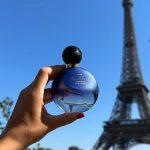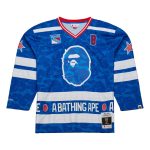The eye has to travel,” said the former Vogue editor and empress of fashion, Diana Vreeland. In 1966 she famously flew her team to a snowy Japanese mountain range along with fifteen trunks of clothes for five weeks to shoot model Veruschka dressed in fur for the magazine at a rumored cost of 1 million dollars. It was an unprecedented gesture that sealed the romance between fashion and travel. In the years that followed Halston and his entourage staged a high profile photoshoot on the Great Wall of China; Linda Evangelista and her supermodel cohort boarded Concorde like it was the crosstown bus; and John Galliano famously flew his creative team to all corners of the globe, scooping up inspiration from the culture of Egypt or the Maasai tribe of Kenya. “I’m like a pirate. I love to travel; it’s what inspires me,” he told Harpers Baazar. “Creativity has no nationality, so I don’t want to leave any stone unturned. I love understanding and seeing different cultures.”
But the result of a global pandemic was that we realized the wheels of industry can continue to move even if we can’t. That combined with the pressure on companies to cut their carbon footprint in order to meet sustainability goals, starting with reducing international travel, and the relationship looked to be under threat. Yet here we are in November and the Resort collections, designed to cater for the vacationing consumer who winters somewhere sunny, are appearing in stores. This seasonal drop essentially represents the happy marriage of fashion and travel.
Travel-inspired brand opens Manhattan store
Nantucket-born brand, Cartolina, the Italian word for postcard, has just opened a Manhattan store. The globetrotting-inspired brand was launched during the pandemic precisely because no one could travel. Founder Margaret Anne Nolen told FashionUnited, “We were inspired by those places we’d been and were looking to explore those memories. Fashion is about connecting with other people and places and getting inspiration from other cultures is important.”
The fall 23 collection inspired by Scotland mixes authentic highland tweeds among thistle-inspired prints, corduroys, tartans and cashmeres, in shades of moss, gorse, and heather. Said Nolen, “For spring we’re moving into Provence, so we have the color of the lavender fields in tweeds from a French mill for our dresses and jackets. We want to be authentic to the area and knew when we found the mill that we wanted to work with them.”
Inspired by her mother who loved fashion and who taught her to go out into the world and create experiences and memories, Nolen considers it an honor to set up shop right opposite the iconic 73-year-old department store Zitomer Pharmacy where her mother came to buy ribbons and bows. With a store already in that prime vacation spot Nantucket, NYC was the ideal location for the brand’s second brick and mortar presence, on “one of the world’s most beautiful shopping locations, Madison Avenue.” Describing the store as “postcard-sized,” Nolen hopes it resembles those special little boutiques the traveler might stumble upon, off the beaten track of some foreign town on a lazy afternoon.
Post-pandemic, designers return to exotic locations for inspiration
The physical experience of fashion, and the sensory experience of seeing it in person rather than on a screen, has proved to be invaluable for customers. But while we want to look chic and polished, the comfort we appreciated during lockdown has also become a priority. Our Zoom-influenced life has led to a relaxing of formalities in dress but it hasn’t relaxed designers’ wanderlust. Rosie Assouline, quoted in Fashionista, expressed it perfectly: “For me and for a lot of creatives, we need space. We need to get out of the city and out of our grind, and we need to see space and color and art. The collection we just did for holiday was very much inspired by Morocco and the French Riviera back in the ’70s and ’80s. I think traveling is nice because you see different colors, different culture, different foods. It’s always beautiful. Even in my hotel home, the bathroom floor is inspiring, and I’m always inspired by people.” For Spring, LaQuan Smith took an inspiration trip to Morocco where the spice market influenced his color palette, while according to Veronica Beard, “Traveling is one of my greatest passions and sources of inspiration. I love learning the local culture. My greatest triumph is that I’ve exposed my kids to off-the-grid destinations. I think we’ve all found an essential appreciation of humanity, and my kids have learned endurance and respect for other cultures and for the nature around them.”
At NYFW: The Talks, last month, designers Jack Jack McCollough and Lazaro Hernandez of Proenza Schouler,, participated in a panel entitled, From Destinations to Design: Travel’s Influence on Fashion, presented by Waldorf Astoria Hotels & Resorts. Historically, hotels were places to be seen, their lobbies and dining rooms providing the ideal opportunity to put fashion on display.
“New York is where it all happens for us,” said McCollough of his brand founded 24 years ago. “Our studio is in Soho, our team is all New Yorkers, there’s a spirit here that’s different than the Parisian or Milanese spirit. An ease, a no-fuss sensibility and that inspires us.” New Yorkers who exhibit a certain attitude still catch his eye and he will sneak a photo on his phone to study back at the studio: “the slouch of the skirt, or a gesture, a mood that feels right for today.” But the founders still need to explore beyond the city than never sleeps.
“A lot of ideas actually come to us when traveling,” said Hernandez. “ We’re kind of dorky, art school kids and we take sketchbooks and pencils everywhere. We’ll find ourselves drawing in those quiet moments. It’s hard to find time in NYC. It’s really important to travel, to go to a beach somewhere, go out in nature, to just breathe.”
However, even the most seasoned fashion travelers are at risk of taking a wrong turn and ending up in cultural appropriation’s murky swamps. Since the royal courts of the 16th century, through to the early twentieth century’s couturiers, Paul Poiret, Mario Fortuny and Madeline Vionnet, right up to designers of recent times such as Isabel Marant, Dolce & Gabbana, Alessandro Michele at Gucci, western fashion has given itself license to cherry pick silhouettes, techniques, fabrics and motifs from minorities and indigenous communities across Africa, Japan, India, Mexico, Jamaica in ways that are now considered exploitative and imperialistic. Contemporary designers have no choice but to source mindfully and be respectful of other cultures or face humiliation amplified globally across social media.
Hernandez and McCullough recall the brand’s early days and trips to destinations like Bhutan or India. Now they appreciate scenic spots closer to home, “We have a farm up in the Berkshires,” said McCullough. “NYC is a great place to take meetings, work with the team. Then we go up there for couple of weeks, just the two of us, just sketching, and that becomes the road map to the collection.”
Road map. That fashion can’t sit still is evident even in its terminology—car coats, boat shoes, driving gloves, aviator sunglasses. It will forever have its eye on the horizon. Fashion isn’t static; it exists on the move, evoking independence, adventure, escapism, freedom.



